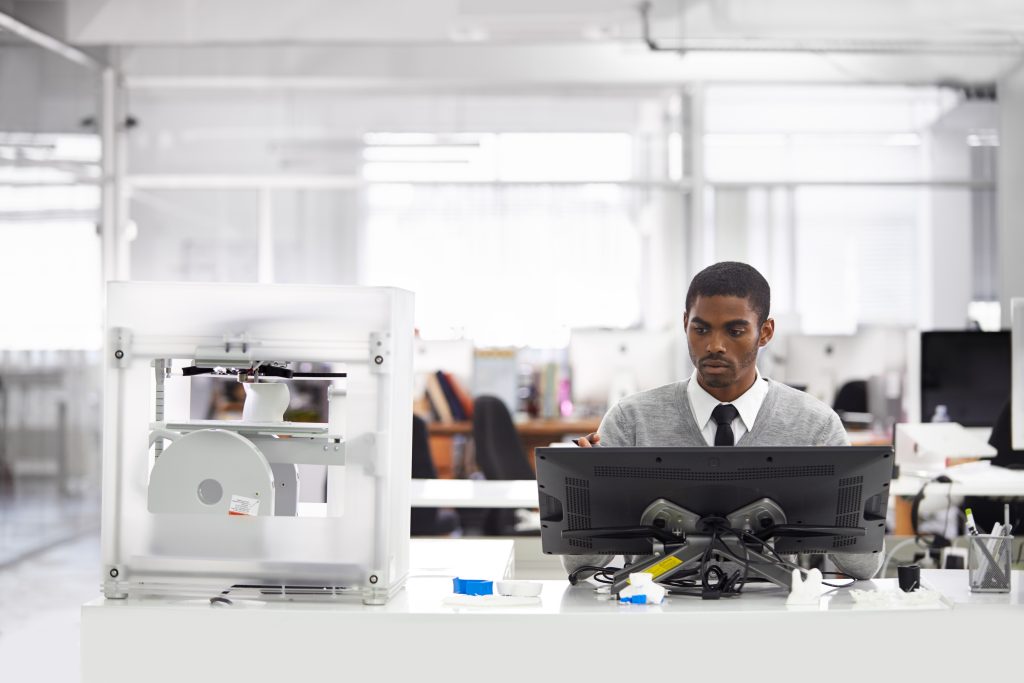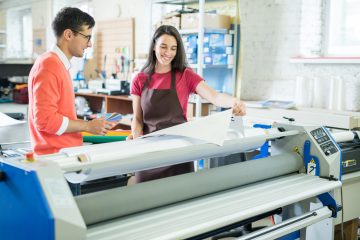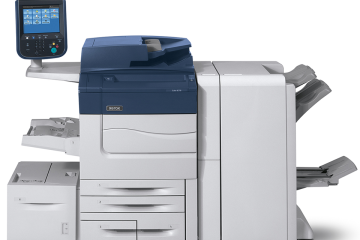Have you ever wondered what it would be like to bring your imagination to life? With the rise of 3D printing technology, that dream is becoming a reality for many people. Whether you’re a hobbyist, an artist, or an entrepreneur, 3D printing opens up a world of possibilities for creating unique and customized objects.
But what exactly is 3D printing and how does it work? In simple terms, 3D printing is a process of creating three-dimensional objects by layering materials on top of each other. It’s like building something layer by layer, but instead of using traditional construction materials, 3D printers use plastics, metals, and even food-grade materials to bring designs to life.
In this article, we will dive into the fascinating world of 3D printing, exploring its applications, benefits, and the different types of printers available. Whether you’re a beginner or already familiar with the technology, this article will provide you with a comprehensive overview of the exciting possibilities that 3D printing offers.
What Is 3D Printing?
3D printing, also known as additive manufacturing, is a revolutionary technology that has transformed various industries by allowing the creation of intricate designs and a wide range of objects. Unlike traditional manufacturing methods, which involve subtracting materials from a solid block, 3D printing builds objects layer by layer using digital designs.
The printing process starts with a digital design, which is created using computer-aided design (CAD) software or obtained from a 3D scanner. The design is then sliced into thin cross-sections, and the 3D printer follows these instructions to sequentially deposit and solidify material, usually in the form of a thermoplastic filament. This layer-by-layer construction allows for unparalleled design freedom and the realization of complex geometries that were once impossible to manufacture.
Types Of 3D Printing Technologies
There are several types of 3D printing technologies available today, each with its own unique process and capabilities. These technologies have revolutionized the manufacturing industry, offering unparalleled design freedom and a wide range of applications. From intricate designs to large-scale production, 3D printing has become a popular choice for industries such as healthcare, architecture, fashion, and more. In this article, we will explore some of the most common 3D printing technologies and their advantages in bringing digital designs to life.
Fused Deposition Modeling (FDM)
Fused Deposition Modeling (FDM) is one of the most popular 3D printing technologies available today. It offers a wide range of applications and is known for its cost-saving benefits and unparalleled design freedom.
In FDM 3D printing, the process starts with a 3D digital model that is sliced into thin layers. A thermoplastic filament is then fed into a heated nozzle, where it is melted into a semi-liquid state. The nozzle moves along the X, Y, and Z axes, extruding the melted filament layer by layer onto the build platform. As each layer cools and solidifies, it fuses with the previous layer, gradually building the object.
FDM offers a wide range of applications due to its ability to use various thermoplastics, including ABS and PLA. This makes it suitable for producing functional prototypes, concept models, and even end-use parts. Moreover, FDM’s layer-by-layer printing process allows for intricate designs and complex geometries to be created with ease, offering unparalleled design freedom.
Stereolithography Apparatus (SLA)
The Stereolithography Apparatus (SLA) is a 3D printing technology that offers unique advantages over other methods. In SLA, a liquid resin is used as the printing material instead of a thermoplastic filament. This liquid resin is then cured layer by layer using a laser or projector, resulting in a solid object.
SLA allows for the creation of intricate designs and complex structures with ease. As the liquid resin is cured, it can form detailed and precise shapes that may be difficult to achieve with other 3D printing technologies. This makes SLA a popular choice for industries such as jewelry, dentistry, and prototyping.
The layer-by-layer curing process of SLA ensures the accurate reproduction of digital designs. Each layer solidifies as it is cured, forming a strong and durable object. This process also allows for the production of objects with smooth and intricate surfaces, opening up endless possibilities for design.
Selective Laser Sintering (SLS)
Selective Laser Sintering (SLS) is a powerful 3D printing technology that utilizes a laser to selectively fuse powdered materials layer by layer, allowing for the creation of intricate and complex objects.
With SLS, a thin layer of powdered material, such as nylon or metal, is spread across a build platform. The laser is then used to selectively heat and fuse the powdered particles together, solidifying them into a solid object. This process is repeated layer by layer until the entire object is formed.
Digital Light Processing (DLP)
Digital Light Processing (DLP) is an advanced 3D printing technology that offers precise and intricate designs. In this process, a digital light projector is used to selectively cure liquid photopolymer resin layer by layer, resulting in high-resolution prints.
DLP technology works by projecting a pattern of light onto a vat of liquid resin. The light causes the liquid resin to solidify, forming a thin layer of the desired object. The build platform then moves down, and a new layer of resin is spread across the previous one. This process continues until the complete object is formed.
The 3D Printing Process
The 3D printing process is a revolutionary technology that has transformed the way objects are designed and manufactured. It involves creating three-dimensional objects by adding layer upon layer of material, unlike traditional manufacturing methods that involve subtracting or forming materials. This additive manufacturing technique offers unparalleled design freedom, allowing for the creation of intricate and complex designs that were once impossible to achieve.
Step 1: Creating The Digital Design File
In the world of 3D printing, the journey of transforming a digital design into a physical object begins with creating a digital design file. This file serves as a blueprint for the 3D printer to follow during the printing process.
To create the digital design file, the object to be printed is first modeled digitally using specialized software. This modeling process involves creating a virtual 3D representation of the object, accurately capturing every intricate detail and dimension.
Once the object is digitally modeled, the next step is to slice it into thin layers. This is where specialized software plays a crucial role. The software takes the digital model and divides it into numerous horizontal layers, similar to slicing a loaf of bread. Each layer represents a cross-section of the object and determines how it will be printed.
The importance of this step lies in the precision and accuracy required to ensure a successful 3D printing process. Slicing the digital model into thin layers provides the printer with the exact information it needs to build the object layer by layer. It allows for intricate designs that would be difficult or even impossible to achieve using traditional manufacturing methods.
Step 2: Preparing The File For Printing
Once the object to be printed is digitally modeled, the next step in the 3D printing process is preparing the file for printing. This involves slicing the digital design into thin layers and ensuring it meets the required specifications.
Slicing the design is a crucial step that determines how the object will be printed layer by layer. Specialized software takes the digital model and divides it into numerous horizontal layers, similar to slicing a loaf of bread. Each layer represents a cross-section of the object and provides the printer with the exact information it needs to build the object.
During this process, it is important to ensure that each layer meets the required specifications. This involves checking the accuracy and thickness of each layer, as well as ensuring that any intricate designs or fine details are accurately captured.
Step 3: Loading Materials Into The Printer
After the digital design has been sliced into layers, the next step in the 3D printing process is loading the materials into the printer. The type of material used will depend on the specific requirements of the object being printed.
Loading materials into a 3D printer typically involves two main steps: preparing the materials and inserting them into the printer.
First, the materials need to be prepared. This may involve various processes such as melting, heating, or mixing the materials to achieve the desired properties. Different materials may require different preparation methods to ensure optimal printing results.
Once the materials are prepared, they are inserted into the 3D printer. Most 3D printers have a chamber or cartridge where the materials can be placed. The printer carefully feeds the materials into the printing system, where they are then used to create the object layer by layer.
Common materials used in 3D printing include thermoplastics, metals, ceramics, and resins. Each material has different characteristics and properties, making it suitable for a wide range of applications. The choice of material for a 3D printing project depends on factors such as strength, flexibility, heat resistance, and overall desired aesthetics.
Step 4: Initiating The Print Job
Once the materials are prepared and loaded into the 3D printer, it’s time to initiate the print job. This step involves starting the printer and ensuring it is ready to begin the printing process.
To start the print job, the operator typically uses a computer connected to the 3D printer. The specific software used will depend on the printer manufacturer and model. The operator selects the digital design file that they want to print and adjusts any necessary settings such as print resolution or quality.
After selecting the design file and making the necessary adjustments, the operator sends the instructions to the 3D printer. The printer then starts the printing process, layer by layer, following the instructions from the design file.
Before starting the print, it is essential to ensure that the printer is ready for the job. This includes checking the printer’s temperature, ensuring that the print bed is properly leveled, and confirming that there is enough material available for the entire print job. These preparations help to avoid any potential issues during the printing process.
Once all the necessary checks are completed, the operator can proceed with initiating the print job. The printer will then begin creating the object, meticulously following the digital design file’s instructions until the entire print is completed. This collaborative effort between the operator and the printer showcases the fascinating world of 3D printing and its ability to bring intricate designs to life.
Step 5: Finishing And Post-Processing The Printed Object
Once the 3D printing process is complete, the next step involves finishing and post-processing the printed object to achieve the desired final result. This step is crucial as it enhances the appearance, feel, and functionality of the printed object.
The first task in the finishing process is to remove any support structures that were used to stabilize the object during the printing process. These structures are typically added to areas with overhangs or intricate designs. Various techniques can be employed to remove the supports, such as manually breaking them off, using pliers or cutters, or dissolving them in a suitable chemical solution.
After support structure removal, attention is turned to refining the surface of the printed object. Sanding is a common technique used to smooth out rough surfaces and eliminate any visible layer lines. Fine-grit sandpaper or abrasive media can be used in this step to gradually smooth the surface. Polishing can further enhance the object’s appearance and texture, producing a glossy finish.
Coatings or finishes can be applied to provide additional protection or aesthetic appeal to the printed object. Various options are available, including clear coatings for added durability, paints for color customization, and sealants for weather resistance. These coatings are typically applied using brushes, sprayers, or even dipping methods.
Applications Of 3D Printing In Different Industries
3D printing has revolutionized various industries, offering limitless possibilities and innovative solutions. In the manufacturing industry, 3D printing allows for the creation of intricate designs and a wide range of products, surpassing traditional manufacturing methods. This technology works by building objects layer by layer, using different 3D printing technologies. The advantages of 3D printing in manufacturing include reduced time and cost, increased design possibilities, and unparalleled design freedom.
In healthcare, 3D printing plays a pivotal role in creating customized medical implants, prosthetics, and surgical models. It enables healthcare professionals to produce patient-specific solutions with enhanced properties, leading to better treatment outcomes. Additionally, 3D printing helps in pharmaceuticals by providing personalized dosage forms.
In education, 3D printing offers valuable insight into various subjects, allowing students to physically visualize complex concepts. It promotes hands-on learning and enhances creativity, making it a popular choice for schools and universities.
Architecture benefits greatly from 3D printing, especially in the construction industry. 3D printing technology, such as 3D mortar printing, allows the creation of large-scale architectural structures with reduced material waste, cost savings, and enhanced structural integrity. It also enables designers to explore unconventional and sustainable designs, such as wooden constructions.
The fashion industry embraces 3D printing to create unique and intricate designs. Designers can produce avant-garde accessories, footwear, and garments with a wide range of materials, including recycled materials. 3D printing accessories, such as printing drones, offer new possibilities for fashion designers.

Conclusion
In conclusion, 3D printing has proven to be a game-changer in various industries, offering unparalleled design freedom, cost savings, and enhanced properties. The benefits of 3D printing are evident in healthcare, where personalized medical implants and prosthetics improve treatment outcomes. In education, 3D printing enhances learning and creativity by physically visualizing complex concepts. The construction industry benefits from 3D printing’s ability to create large-scale structures with reduced material waste and enhanced structural integrity.
Looking ahead, the future of 3D printing holds even more promise. One area with immense potential is the development of 3D printed homes. With the ever-increasing demand for affordable housing solutions, 3D printed homes can revolutionize the construction industry and address this pressing issue. By utilizing additive manufacturing techniques, 3D printed homes can be constructed quickly and cost-effectively, making them an attractive option for many individuals and communities.
Moreover, 3D printed homes offer sustainable advantages, as they can be created using recycled materials and produce significantly less waste compared to traditional construction methods. This innovative application of 3D printing technology has the potential to transform the housing industry, providing affordable and environmentally friendly housing solutions for people around the world.
In conclusion, the widespread adoption of 3D printing across industries showcases its transformative power and limitless possibilities. As advancements in 3D printing technologies continue to be made, we can expect even more innovative applications and groundbreaking achievements in the near future. It is clear that 3D printing is shaping the way we manufacture and create, offering a glimpse into a more efficient, customizable, and sustainable future.


